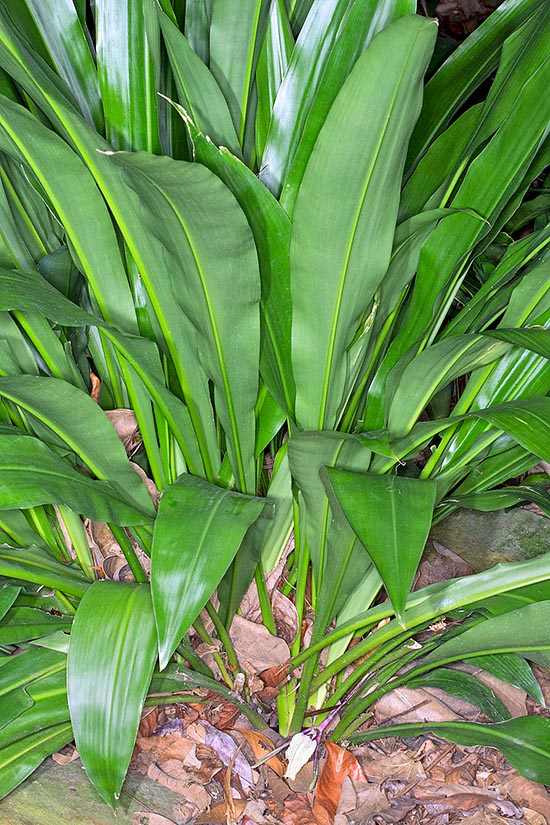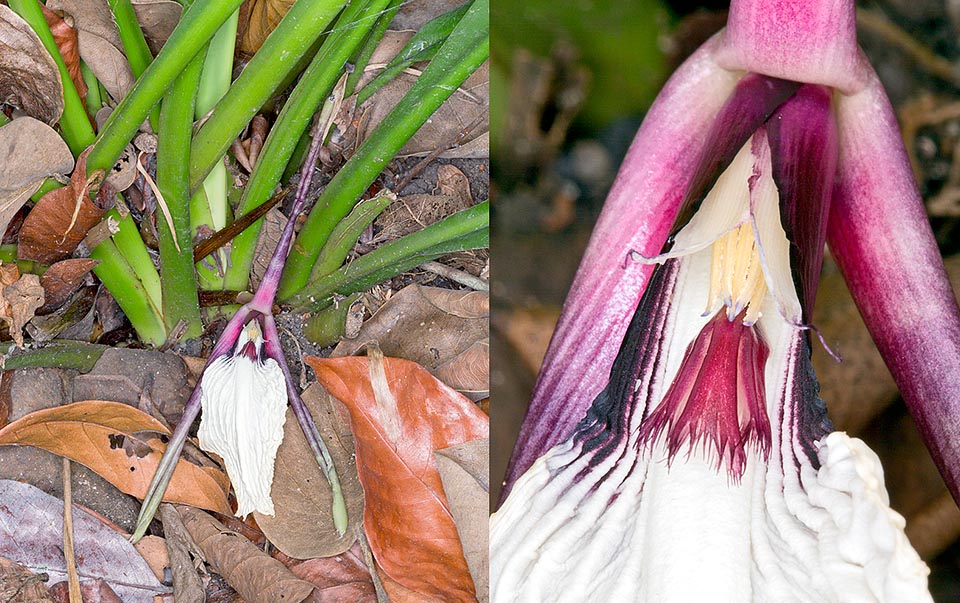Family : Lowiaceae

Text © Pietro Puccio

English translation by Mario Beltramini

Orchidantha fimbriata is a rhizomatous herbaceous species native to Peninsular Malaysia where grows in the humid forests underwood at low and medium altitudes © Giuseppe Mazza
The name of the genus comes from the combination of the Greek terms “ὄρχις” (orchis) and ἄνθος” (anthos) = flower, therefore ‘flower similar to an orchid’, in fact the genus is characterized by having the flowers with 3 sepals and 3 petals one of which quite different in shape, size and colour from the other two, structure reminding that of the orchids; the specific name is the Latin adjective “fimbriatus, a, um” = fringed, with reference to the stigma.
Common names: lobak hutan, lebuk hutan (Malay).
The Orchidantha fimbriata Holttum (1970) is a rhizomatous herbaceous species, up to about 1 m tall, with basal leaves, on an up to 30 cm long petiole, simple, lanceolate with pointed apex and entire margin, up to 1 m long and 15 cm broad, of glossy intense green colour.
Solitary flowers at the base of the plant with 3 linear sepals with pointed apex, 10-14 cm long and 2 cm broad, of dark purple or green with purple base colour.
Triangular lateral petals, 3 cm long and 0,5 cm broad at the base, of cream white colour with dark purple apex, retroflexed, 10-12 cm long and 5 cm broad labellum, of cream white colour with dark purple base, 5 stamina, 2,5 cm long, and stigma, 2,5 cm long, trilobed with fringed lobes.
The flowers are pollinated by coleopterans belonging to the family of the Nitidulidae. The fruits are capsules containing seeds, about 1 cm long, provided of aril.
Little known species, like the family to which it belongs, that would deserve a greater diffusion thanks to the ornamental foliage and the characteristic flowers, even if these ones often go unnoticed as hidden by the leaves.
Cultivable in the tropical and humid subtropical climate regions where it can be utilized for borders or as ground cover, requires a semi-shades position and draining soil rich of organic substance maintained constantly humid.
It adapts to cultivation in pot in order to be sheltered in protected location, where the climate does not allow the cultivation in open air during the winter months, or for the decoration of luminous inner spaces, with lowest winter values of temperature preferably over the 15 °C.

It's not easy to see the ephemeral flowers that sporadically grow close to the soil, hidden among the uinderwood leaves © Giuseppe Mazza
The boiled leaves are utilized by the local populations as sedative in the chest and back pains.
→ To appreciate the biodiversity within the family LOWIACEAE please click here.
